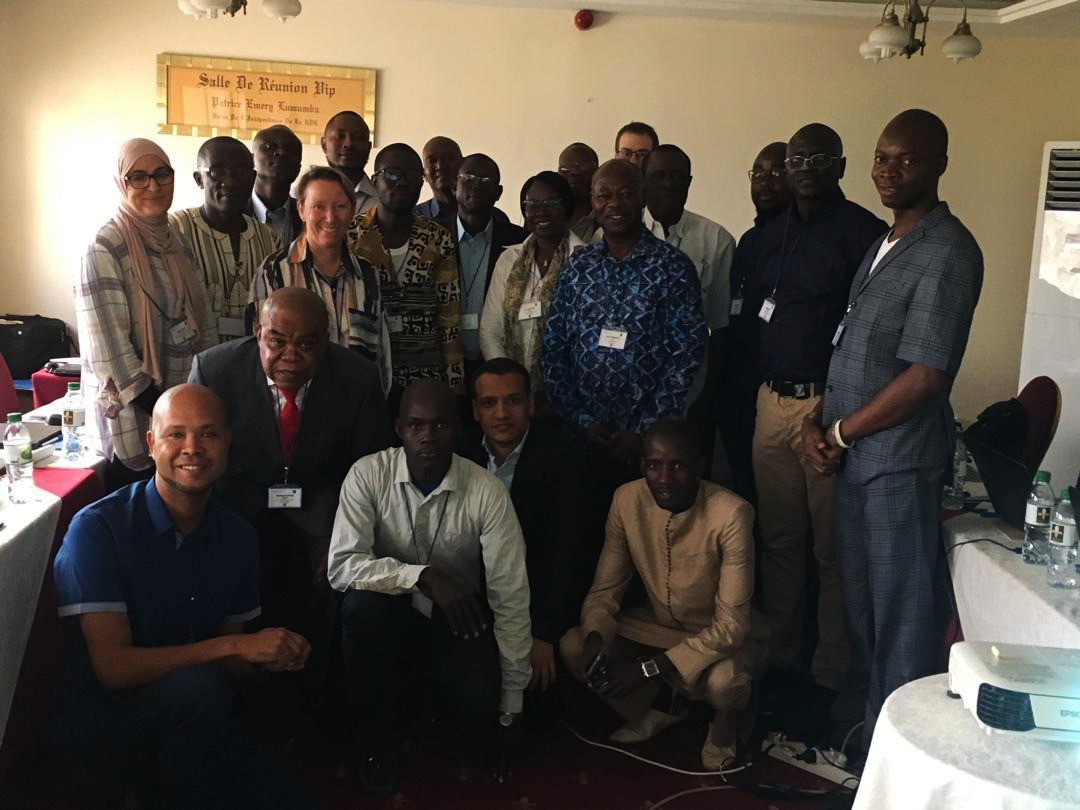First co-cruise leadership training in conducting successful Nansen research surveys
For the first time ever, a course for prospective co-cruise leaders, expected to join the scientific surveys onboard the research vessel (R/V) Dr Fridtjof Nansen, was held in Dakar, Senegal, from 17 to 21 February 2020. The training was attended by 19 participants from 16 countries, and led by Katherine Michalsen together with Fabian Zimmermann - the instructors from the Norwegian Institute of Marine Research (IMR) – as well as Kwame Koranteng, FAO consultant and former coordinator of the EAF-Nansen Programme. The Dakar-based secretariat of The Canary Current Large Marine Ecosystem (CCLME) project provided administrative support for the course. The event hosted a wide range of participants, from those who have never taken part in marine research studies onboard the R/V Dr Fridtjof Nansen to those who have participated in five or more surveys aboard the vessel.
|
|
The overall objective of the co-cruise leadership initiative is to enable scientists from the Programme partner countries to effectively assist the cruise leaders in their work in the course of the Nansen surveys, and by doing so, develop experience in leading a scientific expedition. For each survey, the cruise leader, who is a scientist from IMR, is expected to ensure that sampling is carried out according to agreed standards and objectives. They give roles to the participants, supervise the work under the responsibility of the various teams (e.g. fish team, plankton team, CTD team, etc.) and are responsible for preparing the survey report. The co-cruise leader is expected to cooperate with the cruise leader on all aspects of a survey implementation, including supervision of the teamwork, data collection, analysis and reporting. For each survey leg, a co-cruise leader is nominated from among the scientists of the participating countries.
At the start of the course, participants were introduced to a polling software, used to evaluate the various components of the course. They were also introduced to the Nansen Wiki, that contains various information about the Nansen surveys, the collected data and ways of storing these data, overview of the equipment, together with the requirements and procedures that the survey participants must be familiar with.
The course was composed of a theoretical part, followed by practical exercises and accompanied by an interactive poll, intended to assess the usefulness of each unit, and the participants’ analysis of it. The theoretical presentations included the following themes: Introduction to the EAF-Nansen Programme; Planning of the research surveys; Activities and responsibilities prior to the surveys; Survey execution on board the R/V Dr Fridtjof Nansen; Activities and responsibilities at the end of each survey (data handling and preparation of the survey report); Post-survey activities and assessment of participants’ understanding of the course.
 |
 |
|
The course instructor, Ms Katherine Michalsen, handing out certificates to the participants of the co-cruise leadership training © FAO |
|
The trainees accomplished a broad practical exercise on data analysis and acoustic biomass estimation, using modified Nansis output from an actual cruise with the R/V Dr Fridtjof Nansen, that contains data on trawl stations and catches, as well as individual fish measurements. The general objective for this session was to conduct data exploration, as routinely done by the cruise leaders on the R/V Dr Fridtjof Nansen, and estimate the biomass of the target species. On the final day of the course, the following task was given to the participants, as a way of demonstrating the knowledge gained throughout the training.
Question:
At the last session of the Regional Fisheries Body (RFB) that your country is a working party to (e.g. CECAF, or BCC), participants were informed about a regional ecosystem survey to be carried out by the R/V Dr Fridtjof Nansen in the continental shelf waters covered by the RFB. It was clarified that the research vessel operates under the EAF-Nansen Programme of FAO. Your country will be covered in the survey.
Being a senior scientist in your institute, the Director has asked you to coordinate your country’s participation in the survey and to ensure that the country obtains maximum benefit from the survey. What steps will you take to make this happen? Consider all steps that are required and need to be done, including preparing the Minister to meet stakeholders and facilitating input into critical management decisions that will lead to addressing unsustainable exploitation of the nation’s fishery resources.
You are expected to work in groups and to report back to the plenary; ensure that every member of the group contributes to the reporting back to the plenary.
The participants worked in three groups, each of which reported back in the final plenary session; all members from each group contributed to the reporting.
Through the feedback received from the participants, the instructors consider the training to be very successful, and believe it will bring a positive impact on the organization of future Nansen surveys, including the post-survey activities. Additionally, the course equipped the national experts with useful knowledge on how to prepare logistically for the surveys, and offered an opportunity to strengthen collaboration with the EAF-Nansen Programme Coordination Unit as well as the IMR Cruise Leaders, from the early phase of survey planning. Finally, the course addressed the challenges related to insufficient communication or lack of information, and helped to outline possible improvements in this aspect for future surveys.

